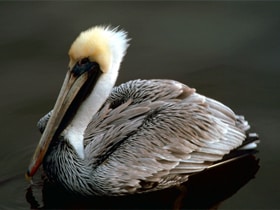On November 11, 2009, Secretary of the Interior Ken Salazar, Assistant Secretary for Fish and Wildlife and Parks Tom Strickland and U.S. Fish and Wildlife Service Director Sam Hamilton announced that the Brown Pelican, a species once decimated by the pesticide DDT, has recovered and is being removed from the list of threatened and endangered species under the Endangered Species Act.
 The brown pelican was first declared endangered in 1970 under the Endangered Species Preservation Act, a precursor to the current Endangered Species Act. Since then, thanks to a ban on DDT and efforts by states, conservation organizations, private citizens and many other partners, the bird has recovered. There are now more than 650,000 brown pelicans found across Florida and the Gulf and Pacific Coasts, as well as in the Caribbean and Latin America.
The brown pelican was first declared endangered in 1970 under the Endangered Species Preservation Act, a precursor to the current Endangered Species Act. Since then, thanks to a ban on DDT and efforts by states, conservation organizations, private citizens and many other partners, the bird has recovered. There are now more than 650,000 brown pelicans found across Florida and the Gulf and Pacific Coasts, as well as in the Caribbean and Latin America.
The U.S. Fish & Wildlife Service has developed a Post-Delisting Monitoring Plan, designed to monitor and verify that the recovered, delisted population remains secure from the risk of extinction once the protections of the ESA are removed. The Service can relist the brown pelican if future monitoring or other information shows it is necessary to prevent a significant risk to the brown pelican. The monitoring will be done in cooperation with the State resource agencies, the Commonwealth of Puerto Rico, U.S. Virgin Islands, Mexico, other federal agencies, non-governmental organizations, and individuals.
